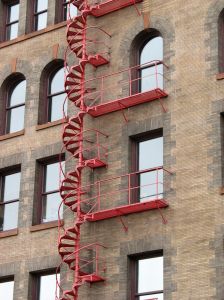

It gets harder to escape patents on DNA
Three separate companies are steadily recruiting intellectual property holders into patent pools for LTE (Long-Term Evolution) technology, initiatives intended to get more manufacturers building gear for the fast network.
Representatives say South Korean electronics makers are becoming targets from ``patent trolls'' as increased competition between manufacturers makes room to seek more money in legal suits.
Last week, Microsoft sued Salesforce.com claiming infringement of 9 software patents. This comes shortly after Nokia sued Apple who sued Nokia over software patents, and after Apple sued HTC who sued Apple over software patents.
As an example of the ridiculous nature of software patents, Microsoft’s claims cover user interface features, including a "system and method for providing and displaying a Web page having an embedded menu" and a "method and system for stacking toolbars in a computer display."
This explosion of litigation based on the patenting of software cannot be brushed-off as large corporations doing what they do, as almost every start-up software company is at some point being shaken down by software patent holders. It’s a massive tax on and retardant of innovation.
I have a request from End Software Patents' Ciarán O'Riordan. He'd like your help.
He says VC good guy Brad Feld is interested in in mailing out copies of the film Patent Absurdity (Full title: Patent Absurdity: How software patents broke the system) to 200 people -- politicians, influential people in companies, policy setters at standards groups, and whoever will be influential in the debate the breaks out post-Bilski -- and he'd like to have some help from you coming up with a list of who best to send to.
The Economist is right on top of the story of the first fully synthetic life-form. For those of you who may have missed the announcement last week, Craig Venter and Hamilton Smith, the two American biologists who unravelled the first DNA sequence of a living organism (a bacterium) in 1995, have pushed the envelope again, demonstrating the first successful boot-up of a synthetic bacterium. Editors at the Economist argue that the only sensible way to protect ourselves from such creations is to require that the DNA sequences be open source. It is a profound insight.
[...]
But now he's back, and he's built the one thing that sits as an exception to the Gene Patent exclusions: a wholly synthetic lifeform. Does Ventner really want to advance science (which he has done), or is he searching, like Charles Muntz, villain of the PIXAR movie UP, for his ultimate, exclusive patent on life?
When a child dies of brain disease at Children's Hospital of Orange County, Philip H. Schwartz meets with the parents, explains his research and asks them to donate their child's brain to his quest for a cure.
"These are not easy conversations to have," he said. "There are expectations by parents that if they allow us to do that to their child, it will serve a useful purpose."
But for three years, the cells derived from many of those children's brains have been suspended in limbo, frozen in Thermos bottles. The nonprofit Southern California hospital has shut down the research, intimidated by a patent claim from the Palo Alto biotech company StemCells. The company's co-founder is esteemed Stanford stem cell scientist Dr. Irving Weissman, one of the world's most passionate advocates for giving scientists access to a field entangled by politics, ethics — and now money.